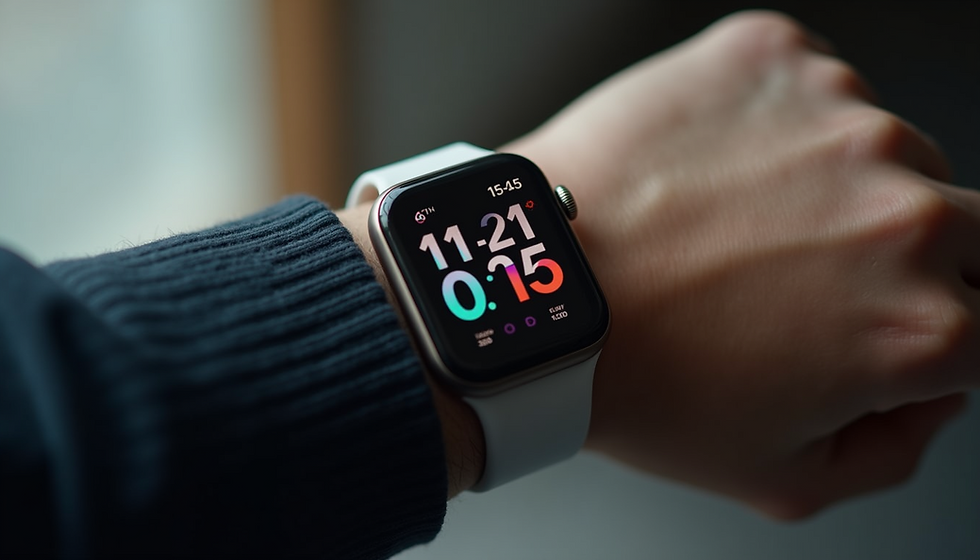Transforming Patient Care: The Unseen Impact of Rapid Medicine Delivery Systems
- Aahil Bagadia
- Aug 24
- 4 min read
In today's fast-paced world, healthcare is changing rapidly. With technology advancing and the demand for quick patient care increasing, rapid medicine delivery systems have been developed. These systems do more than add convenience; they are reshaping how patients access their medications, improving the overall healthcare experience.
Let's take a closer look at the impact of rapid medicine delivery, including its benefits, challenges, and what lies ahead for patient care.
The Rise of Rapid Medicine Delivery Systems
Rapid medicine delivery is all about providing timely access to medications. Traditional methods often involve long wait times, which can put patients needing immediate treatment at risk. Thanks to technology, many platforms now streamline these processes.
Rapid medicine delivery systems utilize mobile apps, telemedicine, and logistics networks. These innovations help ensure patients receive their medications swiftly and efficiently. In fact, studies suggest that patients who use rapid delivery systems report a 30% increase in overall satisfaction and demonstrate improved medication adherence, which is vital for effective treatment outcomes.
Benefits of Rapid Medicine Delivery
Enhanced Accessibility
One of the biggest benefits of rapid medicine delivery is enhanced accessibility. Patients can order medications from home, eliminating travel and long waits at pharmacies. This is especially helpful for people with mobility issues or those living in remote areas.
For instance, a senior citizen from a rural town can receive essential medications within a few hours, rather than waiting days for delivery or driving to a far-off pharmacy.
Improved Medication Adherence
Receiving medications on time is crucial for patients managing chronic conditions. Rapid delivery systems ensure that prescriptions arrive when needed, reducing the chances of missed doses. Research shows that improved medication adherence can lead to health outcomes that reduce hospitalizations by 20%, which translates into significant savings for both the healthcare system and patients.
Convenience and Time-Saving
In our busy lives, convenience is essential. Rapid medicine delivery saves patients valuable time. Instead of spending hours at a pharmacy, patients can order online and have their medications delivered directly to their doorstep.
For example, a working parent can order a child’s medication while at the office and have it arrive home before dinner, allowing them to focus on family commitments without stress.
Personalized Care
Many rapid medicine delivery services offer personalized options, such as medication reminders and consultations with pharmacists. This support helps patients better understand their treatment plans and fosters a connection with healthcare providers.
A patient recently reported that receiving a timely reminder for their medication resulted in improved adherence, showing how personalized care makes a difference.
Challenges Facing Rapid Medicine Delivery
Regulatory Hurdles
Though the benefits are significant, challenges also exist. Regulatory hurdles can slow the growth of these systems. They must comply with laws to protect patient safety, which can complicate delivery processes. Finding a balance is necessary for ongoing progress in this area.
Technology Dependence
Rapid delivery systems depend heavily on technology, which brings risks including data breaches and system failures. To safeguard patient information and maintain smooth operations, companies must invest in robust cybersecurity measures and maintain reliable technology.
For example, one delivery service experienced a system failure during a high-demand period, leading to delays for thousands of patients.
Equity in Access
While rapid medicine delivery is beneficial, there is a risk of creating disparities in access. Not everyone has smartphones or reliable internet, which can limit their ability to use these services. Addressing this issue is crucial to ensure all patients receive the benefits of rapid medicine delivery.
The Future of Rapid Medicine Delivery
Looking ahead, the future for rapid medicine delivery appears bright. Innovations like drone delivery and artificial intelligence are set to change how medications are distributed. Drones could deliver medications to remote areas in under 30 minutes, while AI may optimize delivery routes and predict patient needs more accurately.
Integration with Telehealth
Integrating rapid medicine delivery with telehealth services is an exciting development. Patients can consult healthcare providers online and receive prescriptions delivered to their homes shortly after. This seamless strategy enhances overall patient experiences and can contribute to better health results.
Focus on Patient-Centric Care
The future of healthcare is increasingly focused on patient needs, and rapid medicine delivery systems are leading the way. By emphasizing patient preferences, these systems support a more comprehensive approach to healthcare, ultimately improving health outcomes.
Final Thoughts
Rapid medicine delivery systems are changing patient care in remarkable ways. By enhancing accessibility, improving adherence, and providing convenience, these systems are reshaping healthcare today. However, challenges like regulatory barriers and equity in access must be addressed to ensure that all patients benefit.
As we move forward, the integration of technology and a focus on patient-centric care will drive the evolution of rapid medicine delivery. By embracing these advancements, we can build a healthcare system that prioritizes patient needs and delivers efficient, effective care.

In this ever-changing healthcare environment, staying informed and adaptable is key for both patients and providers. The impact of rapid medicine delivery systems is profound and will play a vital role in shaping the future of patient care.



Comments